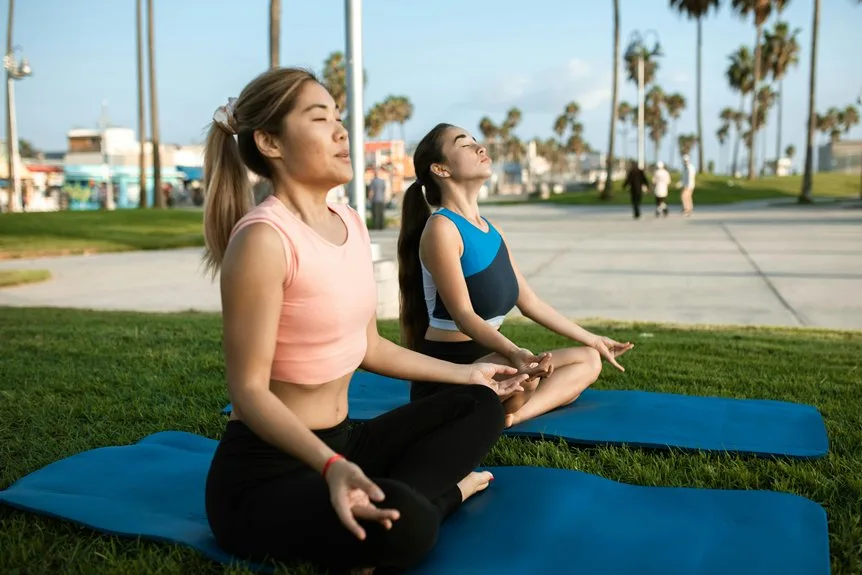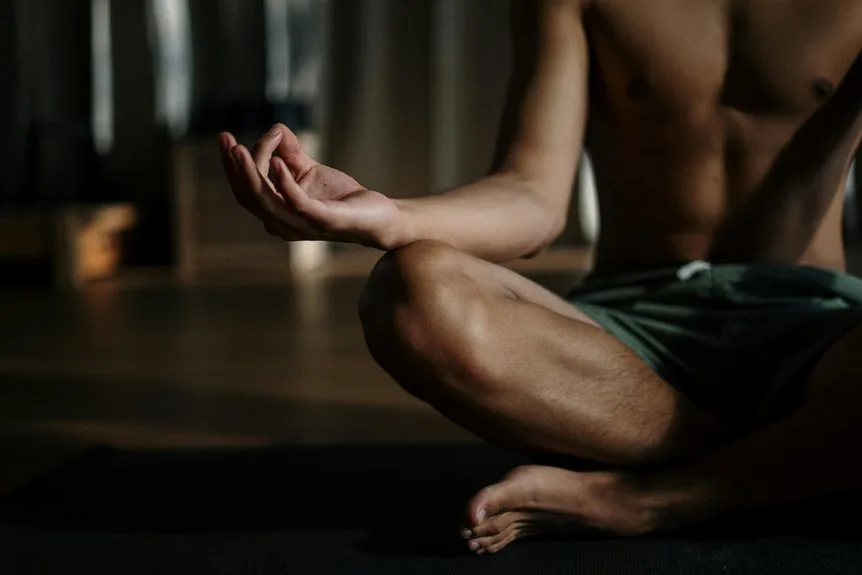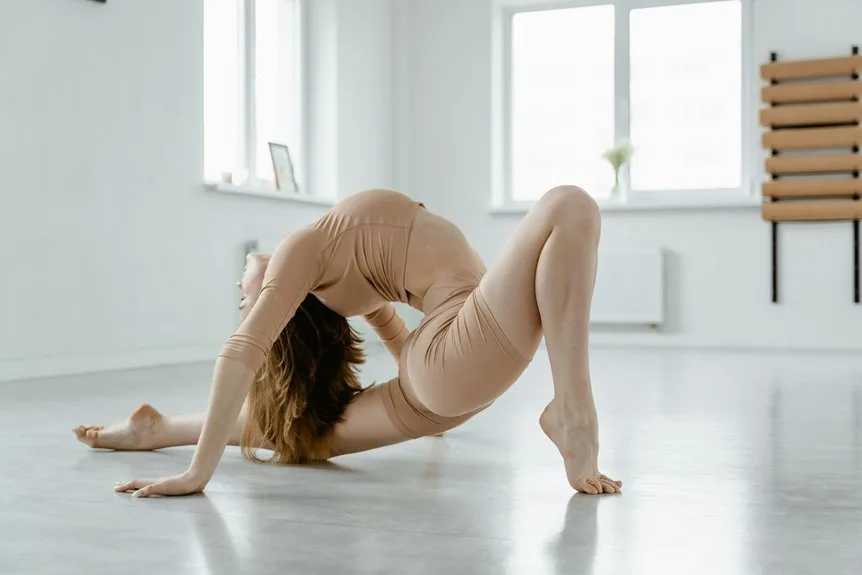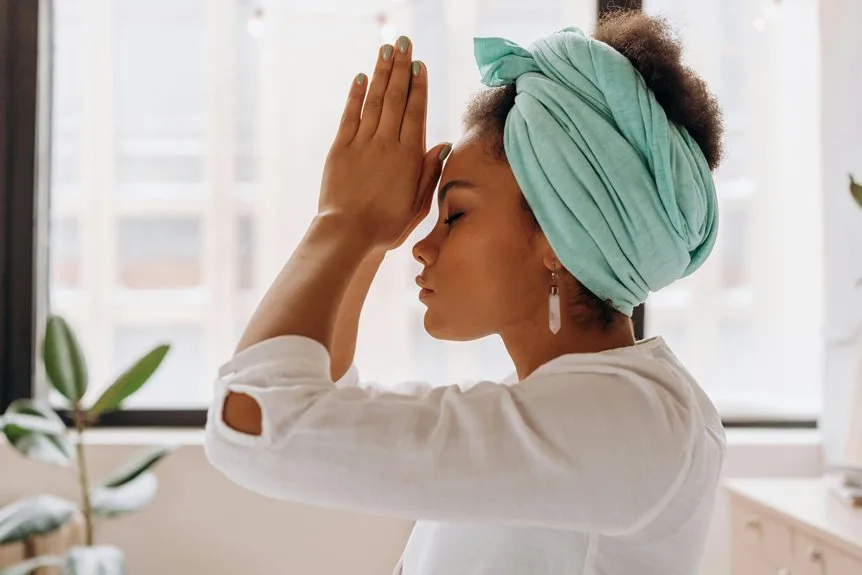Many people find that mindfulness techniques can ease anxious feelings, even when worries seem overwhelming. These methods, like deep breathing or guided imagery, invite the mind to focus on the present and help the body relax. Imagine finding a quiet spot, closing your eyes, and simply noticing your breath—suddenly, tension starts to melt. But how do these techniques actually work, and which ones are best suited for everyday use?
Understanding Mindfulness and Its Role in Anxiety Relief
Ever wonder why so many people are talking about mindfulness these days? It’s not just a trend—it’s a powerful tool for handling anxiety that’s simple enough for anyone to try.
Mindfulness means tuning into what’s happening right now, whether it’s the feeling of your breath, the sound of birds outside, or even the sensation of your feet on the floor. By focusing on the present, people can avoid getting stuck in worries about the future or regrets about the past.
Research shows mindfulness helps reduce anxiety, allowing everyone to feel more grounded, connected, and a little less alone. In places like Solage, Auberge Resorts Collection, mindfulness practices are integrated into wellness experiences to enhance relaxation and well-being.
Key Benefits of Meditation for Mental Well-being
Meditation offers some impressive benefits for mental well-being, especially when it comes to reducing stress and worry that can feel overwhelming at times. It also helps people manage their emotions more smoothly, so instead of reacting on impulse, they can respond with a bit more calm. Plus, many find that regular meditation leads to better sleep, which is always a win after a long day. For those seeking a deeper journey into wellness, personalized wellbeing journeys at Sensei Porcupine Creek can provide guidance and support.
Reduces Stress and Worry
A surprising number of people find themselves caught in a loop of stress and worry, but mindfulness techniques offer a practical way out. Meditation activates the body’s relaxation response, dialing down stress hormones like cortisol and soothing the mind. By focusing on the present, individuals can notice worries as they arise and choose to let them go before they snowball. Deep breathing, a core part of meditation, slows the heart and steadies blood pressure, making relaxation feel more natural. Clinical studies confirm that with regular mindfulness practice, stress and rumination decrease, helping people feel calmer and more connected in their daily lives. For those seeking a serene escape, spending time in Shasta-Trinity National Forest can enhance mindfulness practices by providing a natural setting that promotes relaxation and connection with nature.
Enhances Emotional Regulation
Along with lowering daily stress, mindfulness brings a fresh approach to handling emotions when they get intense. By focusing attention and practicing non-judgmental awareness, individuals create space between a feeling and their reaction. This helps with emotional regulation, letting people notice anger, sadness, or worry without instantly acting on them. Research shows that mindfulness strengthens the prefrontal cortex, which improves self-control and wise decision-making. It also tones down the amygdala, so emotional triggers don’t feel as overwhelming. With regular practice, many find stress reduction comes naturally, and bouncing back from tough moments becomes easier, helping everyone feel more connected and supported. Visiting a Forbes Five-Star Hotel like the Four Seasons Resort and Residences Napa Valley can enhance mindfulness practices with its serene environment and holistic spa rituals at Spa Talisa.
Improves Sleep Quality
Trouble falling asleep or staying asleep is a common struggle, especially when the mind just won’t seem to slow down at night. Mindfulness exercises can help calm those racing thoughts, making it easier to drift off.
Studies show that practicing these techniques before bed not only reduces how long it takes to fall asleep but also improves sleep quality overall. People using mindfulness often notice fewer nighttime wake-ups and less daytime fatigue.
Mindful Breathing Techniques for Calming the Mind
When anxious thoughts start swirling, mindful breathing techniques can offer a steady anchor. Techniques like deep belly breathing, the square breathing method, and simple breath awareness help slow the heart rate, quiet the mind, and make stressful moments a bit more manageable.
Deep Belly Breathing
A simple yet powerful way to calm the mind is through deep belly breathing, sometimes called diaphragmatic breathing. This mindfulness technique asks you to place one hand on your chest and the other on your belly, helping you notice each deep, slow inhale through your nose and each gentle exhale through pursed lips.
As your belly rises and falls, your body gets more oxygen, activating the relaxation response and lowering stress hormones like cortisol. Deep belly breathing, practiced just a few minutes a day, can make anxiety feel less overwhelming, creating a sense of calm and connection for anyone seeking relief.
Square Breathing Method
Among the many mindfulness techniques for easing anxiety, square breathing stands out for its simplicity and effectiveness. This breathing method asks you to inhale, hold, exhale, and pause—each step lasting a steady count of four.
The square pattern creates a calming rhythm, working almost like a secret handshake with your nervous system to invite relaxation. People find it easy to use anywhere, whether waiting in line or before a big meeting.
Practicing square breathing, even briefly, can ease stress, lower cortisol, and help everyone feel connected and focused. It’s a practical mindfulness tool, welcoming all to breathe easier together.
Breath Awareness Practice
Focusing on the natural flow of breath can feel like pressing a gentle reset button for the mind. Breath awareness, a cornerstone of mindfulness meditation, invites people to tune into each inhale and exhale, noticing how the body feels as the air moves in and out.
Techniques such as deep diaphragmatic breathing or box breathing—with their steady, counted rhythms—guide the mind away from anxious thoughts. These mindful breathing practices are simple, require no equipment, and can be done anywhere, making them accessible for anyone seeking calm.
Over time, regular use supports emotional balance and helps create a sense of shared experience.
Body Scan Meditation for Reducing Physical Tension
Body scan meditation offers a gentle way to check in with the body, easing tension and calming anxious thoughts. By slowly moving attention from head to toe, people notice where they’re holding tightness or stress, often finding spots they didn’t expect.
This routine, lasting anywhere from ten to forty-five minutes, can be done with a guided audio or just a quiet voice in the mind. Focusing on each part, breathing deeply, and not judging any feelings helps invite relaxation.
Over time, practicing the body scan regularly builds a sense of belonging within one’s own body, making anxiety feel less overwhelming.
Walking Meditation to Anchor in the Present Moment
There’s something unexpectedly calming about taking slow, mindful steps and really paying attention to the way each foot touches the ground. Walking meditation is all about tuning into the rhythm of your steps, the shifting of your weight, and the feel of the surface beneath you. It’s a simple way to practice mindfulness, letting go of stress by focusing on the present moment.
People often notice the sounds, smells, and sights around them, helping them feel connected to the world. Experts suggest 10-20 minutes daily, which can help turn anxious energy into a sense of calm and grounded belonging.
Grounding Exercises for Managing Stressful Thoughts
Sometimes, when anxious thoughts start to spiral, grounding exercises can act like an anchor, pulling attention away from worries and back into the present. By tuning into the senses—like feeling the coolness of an ice cube or noticing the pressure of feet against the floor—people practice mindfulness and reduce the grip of stress.
The popular 5-4-3-2-1 method invites individuals to list things they see, touch, hear, smell, and taste, helping them connect with their surroundings. These grounding exercises are simple, but with regular practice, they can lower anxiety and help anyone feel more secure and calm, even on tough days.
Acceptance and Commitment Approaches to Anxiety
While grounding exercises offer practical ways to anchor attention in the present, Acceptance and Commitment Therapy (ACT) takes a different route by encouraging people to make space for anxious feelings rather than fighting them. Using mindfulness, ACT helps people notice anxiety without getting stuck in it.
Instead of running from discomfort, *adopt* becomes the goal, which makes anxiety less overwhelming. This approach also focuses on living according to personal values, even when anxiety pops up. Research suggests that this blend of mindfulness and acceptance can lead to real, lasting relief from anxiety.
- *Adopt* anxious emotions with acceptance
- Practice mindfulness to observe thoughts
- Identify personal values for direction
- Take committed actions despite discomfort
- Develop flexibility and resilience
Cultivating Self-Compassion Through Mindfulness
A gentle approach to anxiety begins with self-compassion, an idea that asks people to treat themselves with the same warmth they might offer a close friend. Through mindfulness, individuals learn to notice anxious thoughts without judgment, swapping harsh self-talk for understanding. Practices like loving-kindness meditation encourage warmth and patience, chipping away at self-criticism.
When people practice self-compassion regularly, they build emotional resilience, making it easier to face anxious moments without falling into patterns of avoidance or blame. Over time, this mindful kindness helps create a sense of belonging within oneself, reminding each person that everyone deserves patience, care, and acceptance.
Using Guided Imagery for Emotional Regulation
Building on the foundation of self-compassion, guided imagery offers another gentle tool for calming anxious feelings. By picturing peaceful places or comforting scenes, individuals can shift their focus away from stress and encourage emotional regulation.
Guided imagery uses detailed sensory descriptions—like the sound of waves or warmth of sunlight—to make the experience feel real and soothing. Research suggests that this practice lowers cortisol and heart rate, helping manage anxiety and enhance mood.
Regular use allows people to detach from racing thoughts and find a sense of community in shared calm.
- Visualize peaceful settings
- Engage all senses
- Lower stress hormones
- Redirect anxious thoughts
- Improve mood
Incorporating Mindfulness Into Daily Routines
Daily life offers countless chances to weave mindfulness into familiar routines, making calmness and clarity more accessible than most people realize. Even simple activities—like walking, washing dishes, or commuting—can become opportunities to practice mindfulness by focusing on sights, sounds, or sensations.
Setting aside a few minutes each morning or during lunch for breathing exercises or body scans helps anchor this practice. Journaling gratitude or intentions can set a positive tone.
Turning chores into mindful rituals, paying attention to each step, metamorphose tasks into moments of peace. Quick grounding techniques, like deep breathing, keep mindfulness present even during busy or stressful moments.
Tools and Resources for Practicing Mindfulness
A variety of helpful tools make it easier to stick with mindfulness, whether someone prefers apps on their phone, printable worksheets, or listening to guided meditation scripts.
Popular apps like Headspace and Calm offer quick, calming exercises, while printable resources and scripts—such as the Five Senses worksheet—can help keep practice structured and interesting.
With so many options available online for free or at low cost, getting started with mindfulness feels a lot less overwhelming.
Recommended Mindfulness Apps
When it comes to tackling anxiety with mindfulness, there’s no shortage of helpful apps ready to lend a hand—or rather, a calming voice. Mindfulness apps offer a sense of community and guidance, making stress relief feel both accessible and supportive.
For those looking to ease anxiety, several top-rated options stand out:
- Headspace: Guided meditations focused on anxiety, with a huge user base.
- Calm: Breathing exercises and sleep stories, perfect for daily stress relief.
- Breathe2Relax: Free tool teaching proven breathing techniques.
- Insight Timer: Thousands of free meditations, including for relaxation.
- Anxiety Solution: Structured programs rooted in cognitive-behavioral methods.
Printable Practice Worksheets
Alongside the digital support of mindfulness apps, printable practice worksheets offer something a bit more hands-on for those looking to quiet their minds. These worksheets guide users through mindfulness practice with clear prompts for body scans, breathing exercises, and even gratitude journaling.
They’re easy to print at home, making them a go-to resource for therapy sessions or solo routines. Research shows that having these printed tools can help people stick with their mindfulness practice and really learn the techniques.
Plus, many printable worksheets are free or low cost online, making them friendly for anyone wanting to feel a little more connected.
Guided Meditation Scripts
Guided meditation scripts can feel like a friendly tour guide for the mind, gently leading individuals through the steps of mindfulness practice. These scripts use calming words and clear instructions, making mindfulness easier for everyone, whether they’re new or experienced.
Guided meditation often includes breathing cues, body scans, or prompts to notice sounds, helping users stay present and ease anxiety. Resources like apps and websites offer free, evidence-based scripts, making it simple to start a regular mindfulness routine.
- Structured mindfulness prompts
- Breathing and body scan instructions
- Sensory awareness cues
- Free downloadable scripts
- Evidence-based anxiety relief
Recommended Workbooks and Apps for Ongoing Support
A growing number of workbooks and apps are making mindfulness more approachable for anyone looking to manage anxiety, whether at home or on the go. Titles like “The Mindfulness and Acceptance Workbook for Anxiety” offer step-by-step exercises, easy to use with friends or solo.
Mindfulness apps such as Headspace, Calm, and Breathe2Relax guide users through meditations and calming breathwork, making it simple to fit mindfulness into busy days.
The Mindfulness XToolkit goes even further, blending tracking, exercises, and learning. Regular use of these workbooks and mindfulness apps can help create a shared sense of progress and support.
Building Long-Term Resilience With Mindfulness Practices
Even though learning mindfulness might start as a way to calm anxious thoughts, it has a knack for quietly building up resilience over time. Sticking with mindfulness for several months gradually rewires the brain for better emotional balance and flexibility.
Practicing daily, whether through mindful breathing or body scans, helps people handle stress and bounce back after tough moments. Personalizing a routine makes the process feel more welcoming and effective, offering a sense of belonging and support.
- Reduced anxiety symptoms with consistent mindfulness
- Strengthened emotional regulation through daily practice
- Greater psychological flexibility for life’s curveballs
- Enhanced self-awareness and adaptive coping
- Improved overall mental health and resilience
Frequently Asked Questions
What Are Mindfulness Techniques for Anxiety?
Mindfulness techniques for anxiety include breathing exercises and body scan techniques, which promote a sense of calm and present-moment awareness. These practices support individuals in feeling connected, reducing anxious thoughts, and enhancing a shared sense of well-being.
What Is the 3-3-3 Rule for Anxiety?
The 3-3-3 rule for anxiety is a grounding technique where individuals identify three things they see, touch three objects, and move three body parts. Combined with breathing exercises, it promotes connection, presence, and emotional stability.
What Are Calming Skills to Reduce Overall Anxiety and Manage Anxiety Symptoms?
Calming skills to reduce overall anxiety and manage anxiety symptoms include breathing exercises to soothe the nervous system and body scans for increased awareness. Practicing these techniques promotes a sense of connection, safety, and shared calm within supportive communities.
What Are the 3 C’s of Mindfulness?
During mindfulness meditation, someone practicing breathing exercises might notice anxiety, greet it with curiosity, offer themselves compassion, and observe it clearly. These are the 3 C’s of mindfulness: Curiosity, Compassion, and Clarity, nurturing supportive emotional awareness.
Final Thoughts
Mindfulness isn’t just a trendy buzzword—it’s a science-backed way to ease anxiety. In fact, studies show that regular mindfulness practice can lower anxiety levels by up to 58%. Techniques like deep breathing, body scans, and guided imagery help people feel calmer and more in control. With so many simple tools and resources available, weaving mindfulness into daily life can be surprisingly easy—and might just be the secret weapon for building lasting peace of mind.







